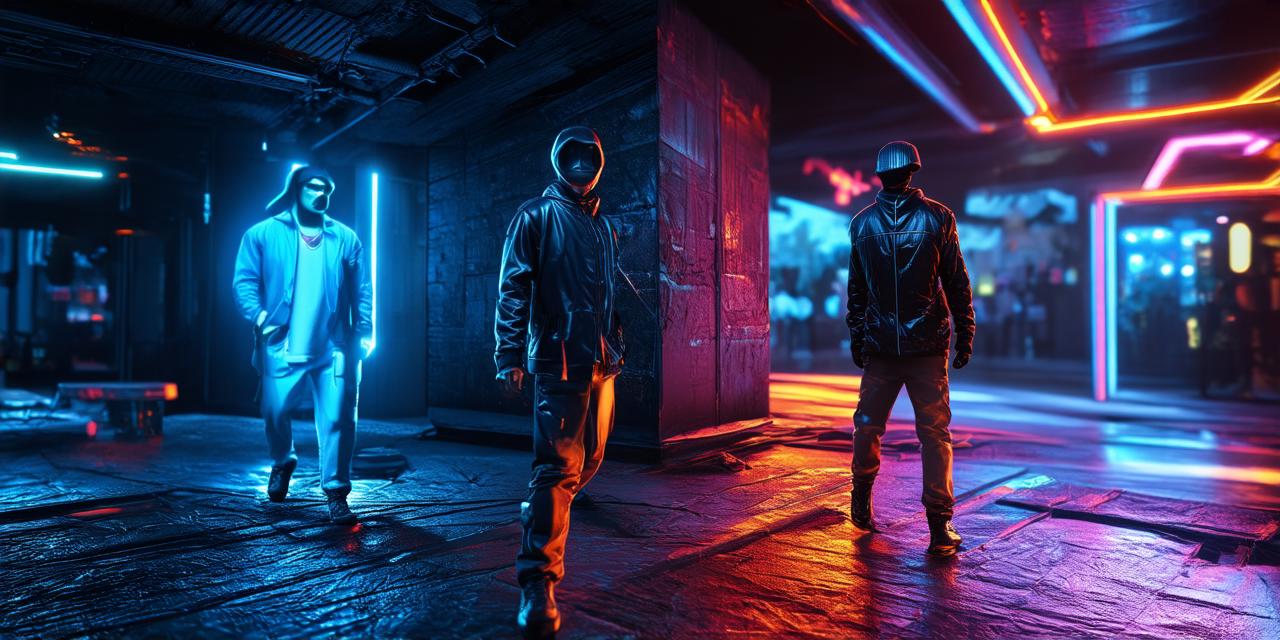Augmented reality (AR) is an exciting and rapidly growing technology that allows users to interact with digital content in the real world. AR designs can range from simple animations to immersive experiences, making it a powerful tool for businesses, education, and entertainment.
Introduction
AR is a technology that superimposes digital content onto the real world. This allows users to interact with digital objects in their environment, making it possible to create immersive experiences that can enhance learning, entertainment, and business. AR designs are created using software tools and programming languages that allow developers to create interactive and engaging content.
Best Practices
Before diving into the technical aspects of creating AR designs, it’s important to understand some best practices that can help you create engaging and effective designs. Here are a few key considerations:
- Keep it simple: While AR is a powerful tool, it’s important to keep your designs simple and easy to use.
- Focus on user experience: User experience (UX) should be at the forefront of your design process. Consider how users will interact with your AR content and ensure that it is intuitive, engaging, and effective in achieving its goals.
- Use real-world context: AR designs are most effective when they are grounded in the real world. Consider the environment in which your AR content will be used and ensure that it is relevant and meaningful to users.
- Test and iterate: Finally, always test your AR designs with real users and iterate based on feedback. This can help you refine your designs and ensure that they are effective in achieving their goals.
Techniques for Creating AR Designs
Now that we’ve discussed some best practices let’s dive into the technical aspects of creating AR designs. There are several techniques you can use to create engaging and interactive AR content, including:
- 3D modeling: 3D modeling is the process of creating three-dimensional objects using software tools. These objects can then be used in AR designs to create immersive experiences.
- Image recognition: Image recognition technology allows AR applications to identify real-world objects and trigger corresponding digital content. This technique can be used to create interactive experiences that respond to user input in the real world.
- Gesture recognition: Gesture recognition technology allows AR applications to detect user movements and translate them into digital actions. This technique can be used to create interactive experiences that respond to user input in the real world.
- Location-based services: Location-based services allow AR applications to access device GPS data and use it to determine the user’s location. This information can then be used to trigger corresponding digital content based on the user’s location.
Tools for Creating AR Designs
There are many tools available that can help you create AR designs, including:
- Unity: Unity is a popular game engine that also supports AR development. It includes a range of features and tools that make it easy to create interactive and engaging AR experiences.
- ARKit: ARKit is an Apple-developed toolkit for creating AR experiences on iOS devices. It includes a range of features and tools that make it easy to create immersive and interactive AR experiences.
- Vuforia: Vuforia is a popular AR development platform that supports a range of devices and platforms. It includes a range of features and tools that make it easy to create engaging and interactive AR experiences.
- Aurasma: Aurasma is a popular AR development platform that allows users to create augmented reality experiences using their own images and videos. It includes a range of features and tools that make it easy to create engaging and interactive AR experiences.

Case Studies
To illustrate how AR designs can be created and used in practice, let’s look at a few real-world examples:
- IKEA Place: IKEA Place is an AR app that allows users to see how furniture would look in their home before they buy it. The app uses image recognition technology to detect the user’s environment and overlay 3D models of furniture onto the real world. This allows users to visualize how different pieces of furniture would fit into their space, making it easier for them to make informed purchasing decisions.
- Snapchat Filters: Snapchat filters are a popular feature that allows users to add digital effects to their photos and videos. The app uses image recognition technology to detect the user’s environment and apply corresponding filters based on the user’s location, time of day, and other factors. This creates a fun and engaging user experience that encourages users to share their experiences with friends and followers.
- Pokémon Go: Pokémon Go is an AR game that allows players to catch virtual creatures in the real world. The game uses GPS data to determine the player’s location and overlay digital objects onto the real world. This creates a fun and engaging user experience that encourages players to explore their environment and interact with other players.
Conclusion
Creating AR designs can be challenging, but by following best practices, using appropriate techniques and tools, and looking at real-world examples, you can create engaging and effective AR experiences. Whether you are a developer, designer, or marketer, AR offers a powerful tool for creating immersive and interactive experiences that can enhance learning, entertainment, and business. By staying up to date with the latest developments in AR technology and best practices, you can create designs that are intuitive, engaging, and effective in achieving their goals.
